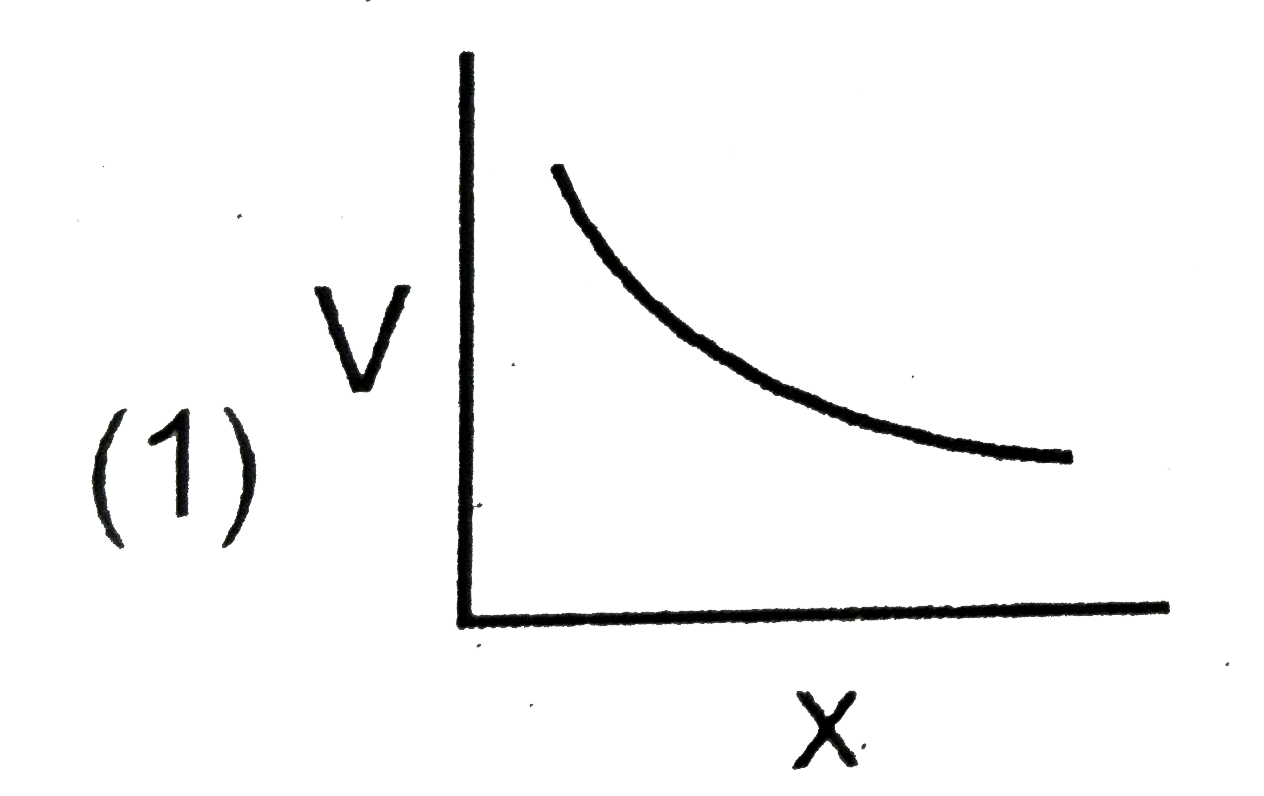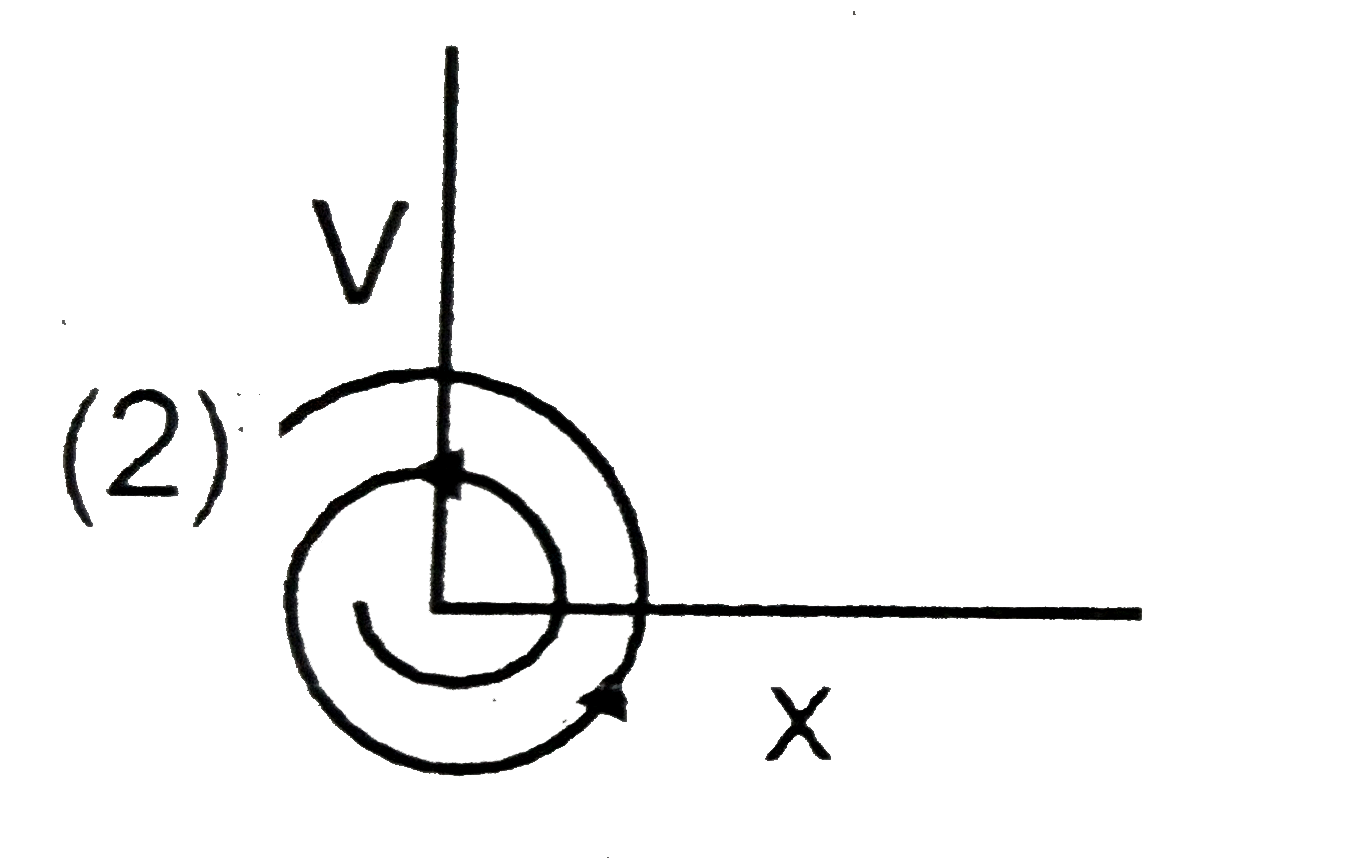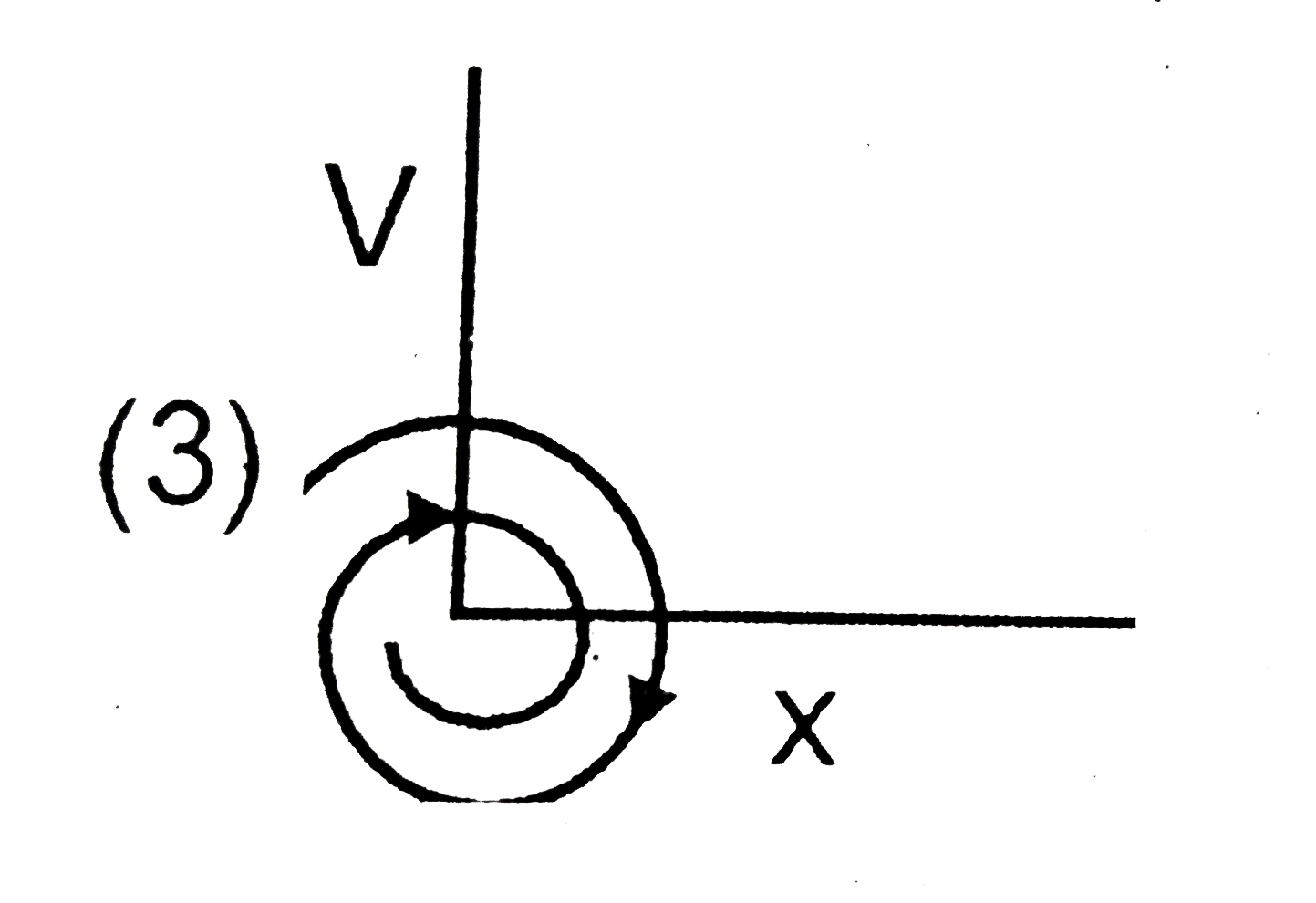Explore topic-wise InterviewSolutions in .
This section includes InterviewSolutions, each offering curated multiple-choice questions to sharpen your knowledge and support exam preparation. Choose a topic below to get started.
| 45051. |
Among which the magnctic susceptibility does not depend on the temperature? |
|
Answer» diamagnetism |
|
| 45052. |
Explain construction and working of photodiode. |
|
Answer» Solution :A PHOTODIODE is a special purposep-n junction diode. If is fabricated with a transparent window to allow light to fall on the diode. When the photodiode is illuminated with light (photons) with energy (hv) greater than the energy gap `(E_(g))` of the semiconductor then electronhole (e-h) pairs are generated due to the absorption of photons. The illuminated photo diode in reverse bias is shown in the figure (a).  The diode is fabricated such that the GENERATION of (e - h) pairs takes place in or NEAR the depletion region of the diode. Due to the electric field of the junction, electron and holes are separated before they recombine. The direction of the electric field is such that electrons reach n-side and holes reach p-side. Electrons are collected on n-side and holes are collected on p-side giving rise to an emf. When an external load is connected, current flows. The magnitude of the photocurrent depends on the intensity of incident light, really photocurrent is proportional to incident light intensity, which we have seen in chapter 11. If a reverse bias is applied, the changein the current with CHANGE in the light intensity. Thus, photodiode can be used as a photodetector to detect optical signals. A typical I-V characteristics of photodiode is shown in figure (B).  This diode is always used in reverse bias mode. Photodiode are used in CD player, computer as well as security system. |
|
| 45053. |
lightwavelength5000 A incident normally on a single .The lightby a convex on a sreen placed on focal minimum will be formedthe angleof diffraction equal to |
|
Answer» `0^(0)` |
|
| 45054. |
In damped oscillation graph between velocity and positionwill be : - |
|
Answer»

|
|
| 45055. |
(a) Three resistors of resistance 2Omega,3Omega and 4Omega are combined in series. What is the total resistance of the combination ? (b) It this combination is connected to a battery of emf 10 V and negligible internal resistance, obtain the potential drop across each resistor. |
|
Answer» Solution :`R_(1)=2OMEGA,R_(2)=3omega,R_(3)=4omega,R_(s)=?` (a)In series ,EFFECTIVE resistance `R_(s)=R_(1)+R_(2)+R_(3)=2+3+4=9omega` (b)Current through the circuit is `I=(epsi)/(R_(s)+r)=(10)/(9)(because r=0)` I=1.11A `therefore` POTENTIAL drop across =`1R_(1)=2xx1.11=2.22V` Potential drop across =IR_(2)=3xx1.11=3.33V` Potentia drop across `R_(3)=IR_(3)=4xx1.11=4.44V` |
|
| 45056. |
There is a small hole in a hollow sphere. The water enters in it when it is taken to a depth of 40 cm under water. The surface tension of water on 0.07 N/m, The diameter of hole is, |
|
Answer» 7mm |
|
| 45057. |
Determine the value of the current , I, in the top wire. |
| Answer» Answer :D | |
| 45058. |
Capacitance of a capacitor 100 mu F. The work is done for depositing chargc 8 xx 10^(-18) C on it will be ......... |
|
Answer» `16.10^(23) J` `= (Q^(2))/(2C) -0` `=((8xx10^(-18))^(2))/(2xx100xx10^(-6))=(64xx10^(-36+4))/(2)` `:. W = 32 xx10^(-32)` J |
|
| 45059. |
A source of emf varepsilon is used to establish a current I through a coil of self-inductance L. Show that the work done by the source to build up the current I_(0) is 1/2 LI_(0)^(2). Or Obtain the expression for the magnetic energy stored in an ideal inductor of self-inductance L when a current I_(0) passes through it. |
|
Answer» Solution :Consider a battery CONNECTED to an inductor L. As the battery cireuit is completed, current starts growing in inductor and consequently an induced EMF is set up in the reverse direction given by `|varepsilon| = L (dI)/(dt)` If the battery supplies a current I through the inductor for a small time dt, the elementary work done by emf source (battery) against the induced emf will be `dW = varepsilon dt = L (dI)/dt.I.dt = LIdI` Hence, the total amount of work done by emf source till the current increases from initial zero VALUE to its FINAL steady value `I_(0)`, will be `W = int_(0)^(I_(0)) LI dI = =[1/2LI_(0)^(2)]_(0)^(I_(0))=1/2L I_(0)^(2)` This work done is stored in the inductor in the form of its MAGNETIC energy. Thus, Energy stored in an inductor `U = W = 1/2LI_(0)^(2). |
|
| 45060. |
The no. of lines of force passing through a given area is called______. |
| Answer» SOLUTION :MAGNETIC FLUX | |
| 45061. |
Find the de Broglie wavelength associated with an alpha particle which is accelerated through a potential difference of 400 V. Given that the mass of the proton is 1.67 xx 10^(-27) kg. |
|
Answer» Solution :An alpha particle cpmtaoms 2 protons and 2 neutrons. Therefore, the mass M of the alpha particle is 4 TIMES that of a proton `(m_(p))` (or a neutron) and its charge q is twice that of a proton (+e). The DE Broglie wavelength associated with it is `lambda = (h)/(sqrt(2 MqV)) = (h)/(sqrt(2 xx (4m_(p)) xx (2E) V))` `= (6.626 xx 10^(-34))/(sqrt(2 xx 4 xx 1.67 xx 10^(27) xx 2 xx 1.6 xx 10^(-19) xx 400))` `= (6.626 xx 10^(-34))/(4 xx 20 xx 10^(-23) sqrt(1.67 xx 1.6)) = 0.00507 Å` |
|
| 45062. |
A copper wire of cross-sectional area 0.5 m m^(2) carries a current of 0.2A. If the free electron density of copper is 8.4xx10^(28)m^(-3) then compute the drift velocity of free electrons. |
|
Answer» Solution :The relation between DRIFT velocity of electrons and current a wire of cross-sectional area A is `v_(d)=(1)/(n eA)=(0.2)/(8.4xx10^(28)xx1.6xx10^(-19)xx0.5xx10^(-6))` `v_(d)=0.03xx10^(-3)MS^(-1)` |
|
| 45063. |
Two beams of light are incident normally on water (mu = 4/3). If one of the beams passes through a glass (mu = 3/2) slab of height 'h' has shown in the figure, the time difference for both the beams for reaching the bottom is (C is velocity of light is vacuum) |
|
Answer» zero |
|
| 45064. |
Explain the electric field lines and the magnitude of electric field. |
|
Answer» Solution :Pictorial representation of electric fielc produced by charge or SYSTEM of charges is electric field lines. Draw vectors pointing along the direction of the electric field with their lengths proportional to the strength of the field at each point. Since the magnitude of electric field at a point decreases inversely as the square of the distance of that point from the charge, the vector gets shorter as one goes away from the charge always pointing radially outward (if charge is positive then outwards and if it is negative then inwards) `E=(kQ)/r^(2)`  In this figure, each arrow INDICATES the electric field i.e. the force acting on a unit positive charge placed at the tail of that arrow. Connect the arrows pointing in one direction and the resulting figure represents a field line. The magnitude of the field is REPRESENTED by the density of field lines. `vecE` is strong NEAR the charge, so the density of field lines is more near the charge and the lines are closer. Away from the charge, the field gets weaker and the density of field lines is less, resulting in well-separated lines. Electric field lines are in 3-dimensions. But, here we have shown them in 2-dimensions. |
|
| 45065. |
The groundstateenergyof hydrogenatom is- 13.6 eV. Whatis the potentialenergyof theelectron in this state ? |
|
Answer» 0eV |
|
| 45066. |
What is SI unit of magnetic moment ? |
| Answer» SOLUTION :ampere-metre. | |
| 45067. |
Dimensional formula of electric flux is....... |
|
Answer» `M^(1)L^(2)T^(-3)A^(-1)` `|phi| =[F/q][A]` `=(M^(1)L^(1)T^(-2)xx L^(2))/(A^(1)T^(1)) =M^(1)L^(3)T^(-3)A^(-1)` |
|
| 45068. |
The electricfield componenets in Fig are E_(x) = alpha x^(1//2), E_(y) = E_(z) = 0 inwhich alpha = 800 N//C -m^(1//2). Considerthe cubeshown in Fig. Calculate(a) the flux phi_(E)throughthe cube,and(b) the charge within the cube. Assumethat a = 0.1m. |
|
Answer» Solution :(a) Here, `E_(x) = ax^(1//2), E_(y) = 0, E_(z) = 0` `alpha = 800 N//C -m^(1//2) , a = 0.1m`. As the electricfieldhas onlyx componenet, therefore.`E. Delta vec(S) = phi_(E) = 0` for each of four faces of cube`_|_` to Y-axis and Z-axis. Flux is there only for left face L and rightface Rof the cubeshown in Fig. At the left face, x = a `:. E_(L) = alpha a^(1//2)` `phi_(L) = vec(E_(L)) . Delta vec(S) =alpha a^(1//2) (a^(2)) cos 180^(@) = -alpha a^(5//2)` At the right face, `x = a + a = 2a` ':. E_(R) = alpha (2a)^(1//2)` `phi_(R) = vec(E_(R)) . Delta vec(S) = alpha (2a)^(1//2) (a^(2)) cos 0^(@)` `=alpha a^(5//2) sqrt(2)` `:.` NET flux through the cube `= phi_(R) + phi_(L)` `= alpha a^(5//2) sqrt(2) - alpha a^(5//2)` `phi = alpha a^(5//2) (sqrt(2) - 1)= 800 (0.1)^(5//2) (sqrt(2) - 1)` `= 1.05 N m^(2) C^(-1)` (b) By GAUSS's theorem, `q = in_(0) phi = 8.85 xx 10^(-12) xx 1.05` `= 9.27xx10^(-12)C` |
|
| 45069. |
The forbidden energy gap in an insulator is of the order of |
| Answer» ANSWER :D | |
| 45070. |
Choose the correct statement(s) of the following: |
|
Answer» Force acting on a particle for EQUAL time intervals can produce the same change in momentum but different change in kinetic energy. |
|
| 45071. |
(a) Find the magnetic field at the point O if the wire carrying a current i has the shape shown. The radius of the current part of the wire is R, the linear parts of the wire are very long. (i) (ii) (iii) (b) A long straight wire along the z-axis carriers a current i in negative z-direction. Find magnetic field in vector from at a point having co-ordinates (x,y) on z=0 plane. (c) A non-coplaner loop of conducting wire carrying a current I is placed as shown in the figure. Each of the straight sections of the loop of length 2a. find unit vector along magnetic field magnetic filed at the point P(a,0,a). |
Answer» Solution :(a) (i)  At `O:` Wire `①` is in `x-y` plane. Magnetic field DUE to this wire be `bot^(ar)` to plane `x-y` at `O`. `B_(1)=(mu_(0)i)/(4piR)`, along `z`-axis Wire `②` is in `y-z` plane. `B_(2)=(mu_(0)i)/(4R)`, along `-x`-axis `B_(3)=(mu_(0)i)/(4piR)`, along `-z`-axis `vec(B)_(O)=-(B_(1)+B_(3)) hatk-B_(2)hati` `=-(mu_(0)i)/(4R) hati-(mu_(0)i)/(2 pi R) hat(k)` `|vec(B)|= B_(o) = (mu_(0)i)/(4R) SQRT(1 + ((2)/(pi))^(2))` (II) 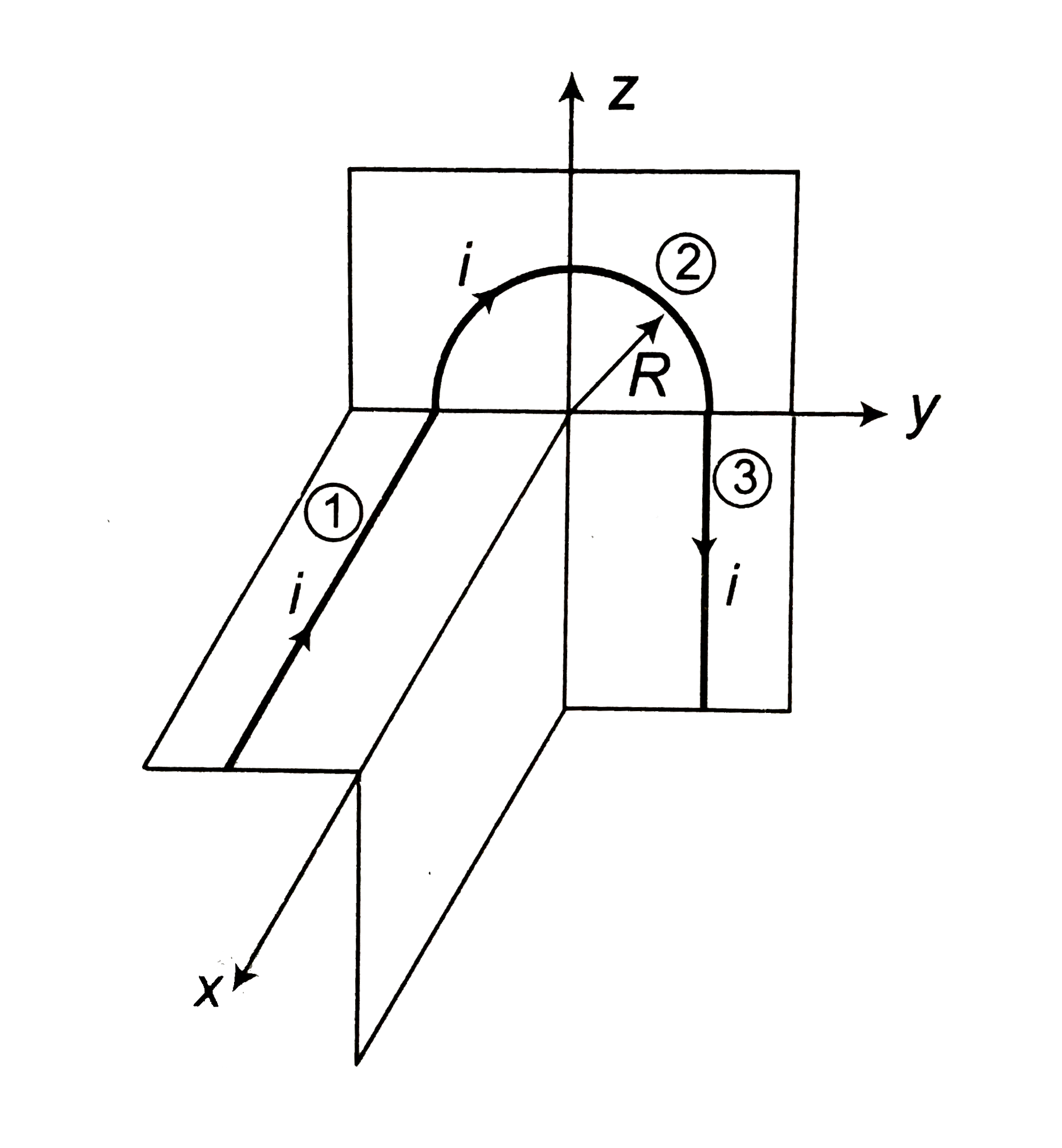 `B_(1)=(mu_(0)i)/(4piR)`, along `-z` axis `B_(2)=(mu_(0)i)/(4R)`, along `-x` axis `B_(3)=(mu_(0)i)/(4piR)`, along `-x` axis `vec(B)_(O)=-(B_(2)+B_(3)) hati-B_(3)hatk` `=-((mu_(0)i)/(4R)+(mu_(0)i)/(4piR)) hati-(mu_(0))/(4piR) hatk` `|vec(B)_(O)|=B_(O)=(mu_(0)i)/(4R) sqrt((1+1/(pi))^(2)+(1/(pi))^(2))` (iii) 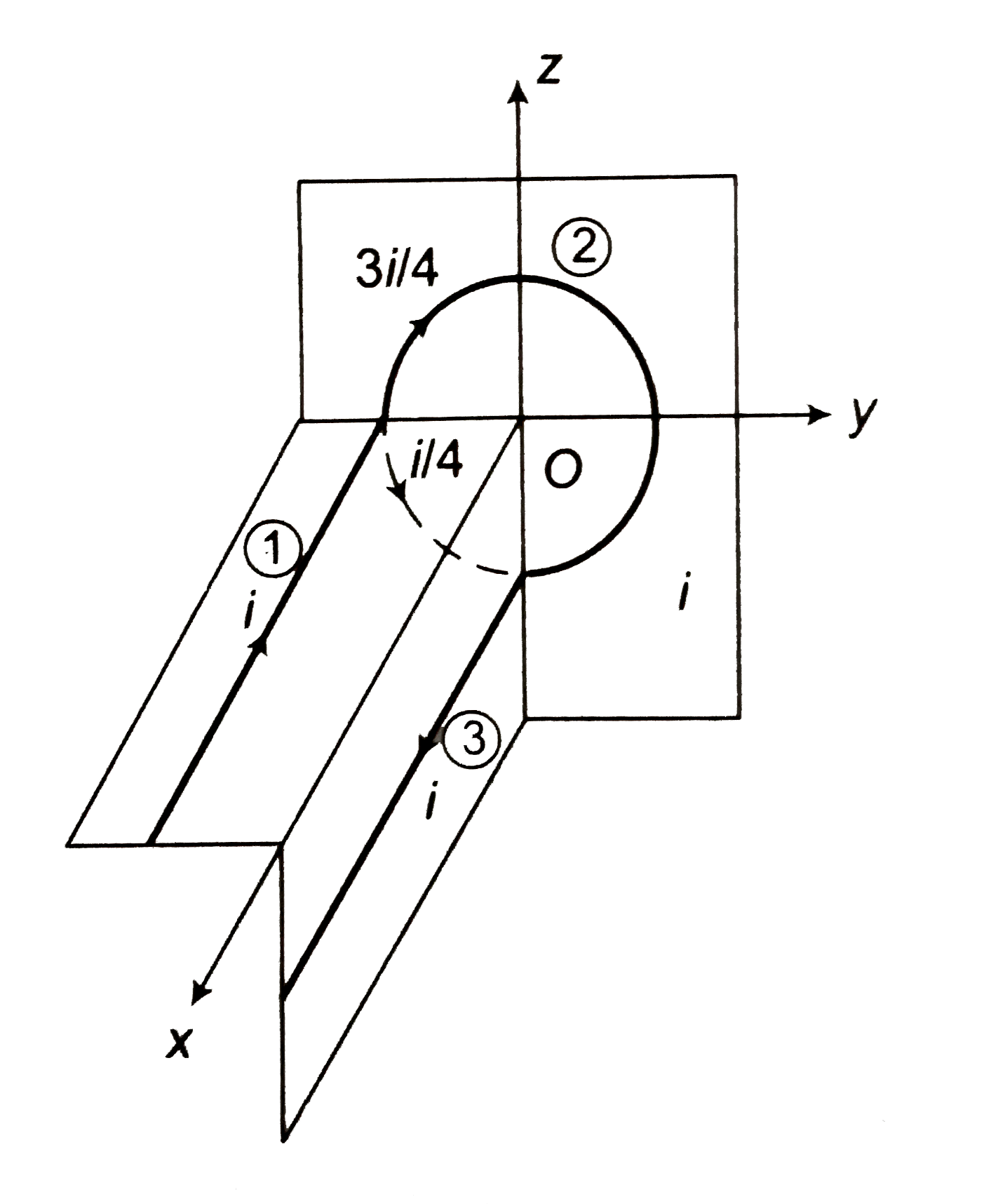 `B_(1)=(mu_(0)i)/(4piR)`, along `-z`direction `B_(2)=0`, current is divided in two PARTS and magnetic field due to these parts is zero. `B_(3)=(mu_(0)i)/(4piR)`, along `-y` direction `vec(B)_(O)=-B_(3)hatj-B_(1)hatk` `=-(mu_(0)i)/(4piR) hatj-(mu_(0)i)/(4piR) hat k` `|vec(B)_(O)|=B_(O)=(sqrt(2)mu_(0)i)/(4piR)=(mu_(0)i)/(2sqrt(2)piR)` 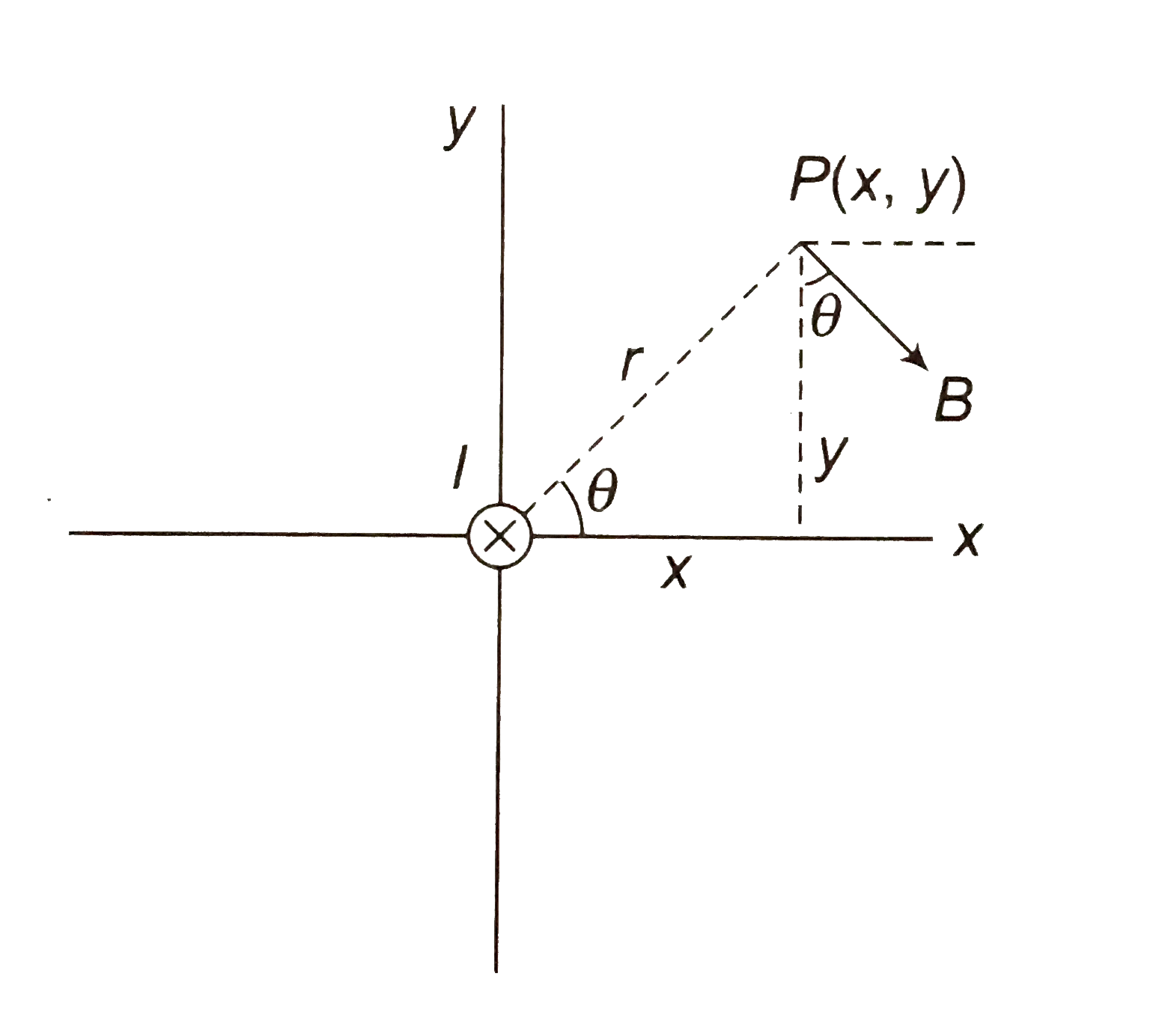 Due to long wire, magnetic field at `P` is `B=(mu_(0)I)/(2piR)` `vec(B)=B_(x)hati-B_(y) hatj` `=B sin thetahati-B cos theta hatj` `=B(y/r hati-x/r hatj)` `=(mu_(0)I)/(2pir)(y/r hati-x/r hatj)` `=(mu_(0)I)/(2pir^(2))(y hati-x hatj)` `=(mu_(0)I)/(2pi(x^(2)+y^(2)))(yhati-xhatj)` (c) There can be two closed loops. 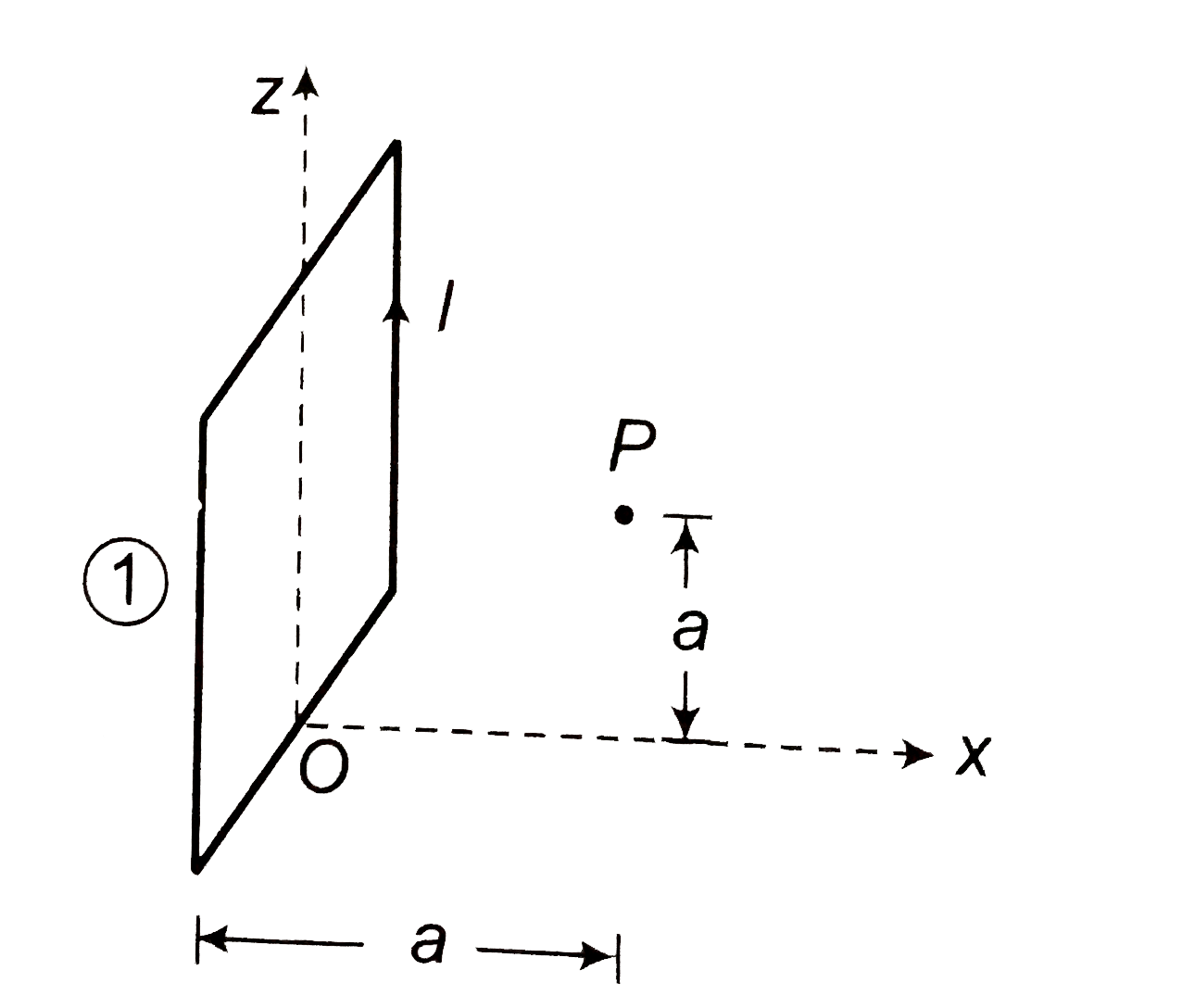 Magnetic field at `P` due to loop, since is anticlockwise, HENCE magnetic field will be towards the observer i.e. along `=x` axis `vec(B)_(1)=Bhatk` where `B`: magnitude of magnetic field due to each loop. `vec(B)_(P)=vec(B)_(1)+vec(B)_(2)=Bhati+Bhatk` Unit vector along magnetic field at `P` `hat(B)_(P)=(vec(B)_(P))/(|vec(B)_(P)|)=(Bhati+Bhatk)/(sqrt(2)B)=1/(sqrt(2))(hati+hatk)` (##CPS_V02_C05_S01_008_S06##) |
|
| 45072. |
Name of the physical quantities which remain constant for a particle moving along a circular path in a horizontal plane ? |
| Answer» SOLUTION :SPEED, KINETIC energy and angular momentum. | |
| 45073. |
When a compact disc is illuminated by a source of white light, coloured lines are observed. This is due to: |
|
Answer» dispersion |
|
| 45074. |
An LCR circuit consists of L = 230 mH, C = 70 mu F and R = 200 Omega. The frequency of AC main is 60Hz and E = 36V . Calculate impedance Z, current I and angle phi . |
Answer» SOLUTION : `X_C= (1)/(2pi v C) = (1)/(2 XX 3.14 xx 60 xx 70 xx 10^(-6) ) = 38 Omega` ` X_L = 2pi v L = 2 xx 3.14 xx 60xx 230 xx 10^(-3) = 87 Omega` `R = 200 Omega` ` Z = sqrt(R^2 + (X_L - X_C)^2) = sqrt(200^2+ (87 -38)^2)` ` = sqrt(200^2 + 49^2) = 206 Omega ` Current `I = E/Z = 36/206 = 0.174 A` Phase `phi = tan^(-1)( (X_L - X_C)/(R ) ) = tan^(-1) [ (87-38)/(200) ]` `phi = tan^(-1) (0.245) = 13.8^@ = 13^@46.` ` V_R = IR= 0.174 xx 200 = 34.8 V` ` V_L = IX_L = 0.174 xx 87 = 15.1 V` ` V_C = IX_C = 0.174 xx 38 = 6.6 V ` `X_L gt X_C` so emf lead the current I. |
|
| 45075. |
An induced emf of 10 mV is set up in a coil when current flowing through a neighbouring coil is 2As^(-1) The mutual inductance for the pair of coils is ____. |
|
Answer» |
|
| 45076. |
Critical angle of light passing from glass to air is minimum for |
|
Answer» red |
|
| 45077. |
Same quantity of ice is filled in each of the two metal containers P and having the same size, shape and wall thickness but made of different materials. The containers are kept in identical surroundings. The ice in P melts completely in time t_1, whereas that in Q takes a time t_2. The ratio of thermal conductivities of the materials of P and Q is |
|
Answer» `t_2 : t_1` Asthe samequanitityof icemelts in Pand Qthequanitityof heatflowsinP andQ MUSTBE same ` thereforeQ = (K_1A(T_1 -T_2)t_1)/(X) = (K_2 A(T_1 -T_2)t_2)/(x)` ` orK_1 T_1 = k_2t_2or(k_1)/(k_2) = (t_2)/(t_1)` |
|
| 45078. |
A capacitor in an LC oscillator has a maximum potential difference of 17 V and a maximum energy of 160 muJ. When the capacitor has a potential difference of 5 V and an energy of 10 muJ, what are (a) the emf across the inductor and (b) the energy stored in the magnetic field? |
|
Answer» |
|
| 45079. |
When an object is placed in front of a concave mirror of focal length f, a virtual image is produced with a magnification of 2. To obtain a real image with a magnification of 2, the object has to be moved by a distance equal to |
|
Answer» `(f)/(2)` |
|
| 45080. |
When .^(30)Si bombarded with a deutron. .^(31)Si is formed in its ground state with the emission of a proton. The energy released in this reaction from the following is E then find [E]:- |
|
Answer» `Q=M_(d)+M_(Si^(30))-M_(si^(31))-M_(p)` .....(2) Given `M_(si^(30)+M_(d)=M_(p)^(31))+M_(N)+5.1` .....(3) `M_(Si)^(31)=M_(p^(31))+M_(e )+1.51` ......(4) Subtract (4) from (3) `M_(si^(30))+M_(d)-M_(si^(31))=M_(n)-M_(e )+3.59` .......(5) Further `M_(n)=M_(p)+M_(e )+OVERSET(-)v+0.78` .......(6) ADD (5) and (6) `M_(si^(30))+M_(d)-M_(si^(31))-M_(p)=Q=3.59+0.78=4.37MeV` |
|
| 45081. |
A 0.030 m container is initially evacuated. Then, 4.0 g of water is placed in the container and, after some time, all the water evaporates. If the temperature of the water vapor is 388 K, what is its pressure? |
|
Answer» `1. 5xx 10^5Pa` |
|
| 45082. |
Out of the two coils placed near each other, when a current of 2 amp is passes through the other .If the number of turns in the secondary coils is 20, the value of coefficient of mutual induction in the coils will be __ |
|
Answer» 6H |
|
| 45083. |
Which one of the following line integrals is correct ? Note : The direction of the loops orientation is shown in the following figure. |
|
Answer» `oint_(c_(1))vecB.vecdl=mu_(0)i_(1)` |
|
| 45084. |
Light of intensity 10^(-5) W m^(-2) falls on a sodium photo-cell of surface area 2 cm^(2) . Assuming that the top 5 layers of sodium absorb the incident energy, estimate time required for photoelectric emission in the wave-picture of radiation. The work function for the metal is given to be about 2 eV. What is the implication of your answer? |
|
Answer» Solution :ASSUME one conduction electron per atom. Effective atomic area `~10^(-20)m^(2)` Number of electrons in 5 layers `=(5xx2xx10^(-4)m^(2))/(10^(-20)m^(2))=10^(17)` Incident power `=10^(-5)Wm^(-2)xx2xx10^(-4)m^(2)=2xx10^(-9)W` In the wave picture, incident power is uniformly absorbed by all the electrons continuously. Consequently, energy absorbed per second per electron `=2xx10^(-9)//10^(17)=2xx10^(-26)W` Time required for photoelectric emission `=2xx1.6xx10^(-19)J//2xx10^(-26)W=1.6xx10^(7)s` Which is about 0.5 year Implication: Experimentally, photoelectric emission is observed nearly instantaneously `(~10^(-9) s)`: Thus, the wave picture is in gross disagreement with experiment. In the photon-picture, energy of the radiation is not continuously shared by all the electrons in the top layers. RATHER, energy comes in discontinuous ‘quanta’. and ABSORPTION of energy does not take place gradually. A photon is either not absorbed, or absorbed by an electron nearly instantly. |
|
| 45085. |
In deriving Newton's formula for velocity of sound, the changes in volume of air are assumed to be |
|
Answer» Isobaric |
|
| 45086. |
A man is using concave mirror for shavinghis face the mirror having magnification 2 what will be the radius of curvature of the mirror? |
| Answer» Answer :B | |
| 45087. |
Who propounded that the radiation from a source is emitted not continuously but intermittently in integral multiples of atom of energy called quantum ? |
| Answer» SOLUTION :MAX PLANK | |
| 45088. |
If f(x)max{x^2,(1-x)^2,3/4}, x in [0,1] , then the value of underset0overset1int f(x) dx is |
|
Answer» `(6sqrt3-1)/12`  `underset0overset1f(x)=underset0overset((2-sqrt3)/2)INT(1-x)^2dx+underset((2-sqrt3)/2)OVERSET(sqrt3/2)int3/4dx+underset(sqrt3/2)overset1intx^2dx` `=(6sqrt3-1)/12` |
|
| 45089. |
How many resonating structures of are possible (including given structure) : |
Answer» 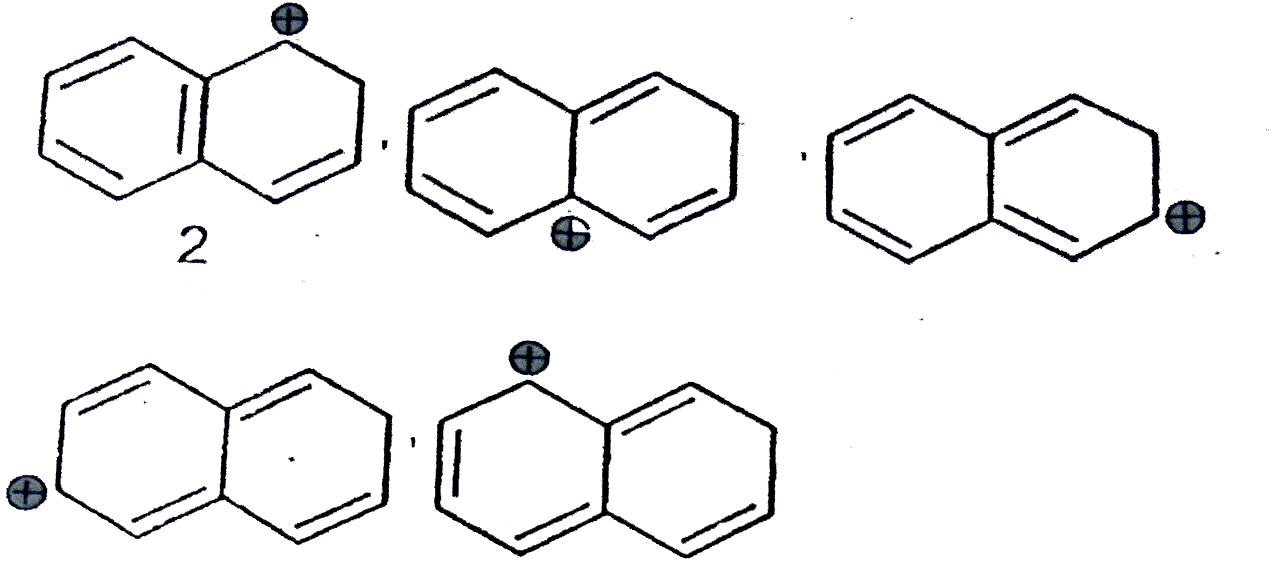
|
|
| 45090. |
The force acting per unit length on one conductor due to the other for two long parallel current - carrying wires is |
|
Answer» `(mu_(0))/(4PI)(I_(1)I_(2))/(R)` |
|
| 45091. |
Two progressive transverse waves given by y_1 = 0.07 sin pi ( 12x - 500 t) and y_2 = 0.07 sin pi (12 x 500t)travelling along a stretched string form nodes and antinodes. What is the displacement at the What is the wavelength ? |
| Answer» SOLUTION :`1//6 m` | |
| 45092. |
Power dissipated in an L-C-R series circuit connected to an AC source of emf epsilon is |
|
Answer» `(EPSILON^(2)R)/([R^(2)+(Lomega-(1)/(Comega))^(2)])` |
|
| 45093. |
Why did the author and grandmother go to school together? |
|
Answer» Because temple was ATTACHED to the school |
|
| 45094. |
In charging a capacitor of capacitance C by a source of emf V, energy supplied by the sources QV and the energy stored in the capacitor is1//2 QV. Justify the difference. |
| Answer» SOLUTION :In the capacitor the voltage increases from O to V, hence energy STORED will correspond to average which will be ` 1//2 QV`.Whilethe sourceisatconstantemf V. Soenergysuppliedwill be QV. Thedifferencebetweenthe twogoesas heatandemf RADIATIONS. | |
| 45095. |
The load current in the transmitting antenna of an unmodulated AM transmitter is 6 Amp. What will be the antenna current when modulation is 60%. |
|
Answer» Solution :Total power carried by AM wave `P_(T)=P_(C)(1+(m^(2))/(2))`…..(1) Where `P_(C)` is the power of carrier componenet and m is the modulation factor.If R is the resistance ,`I_(m)` the antenna LOAD current when modulation is 60% and `I_(C)` Is the antenna load current when unmodulated ,then `(P_(T))/(P_(C))=(I_(m)^(2)R)/(I_(C)^(2)R)""therefore 1+(m^(2))/(2)=(I_(m)^(2))/(I_(C)^(2))` USING (1) or `I_(m)=I_(C)SQRT({(1+(m^(2))/(2))})` Given `I_(C)`=6Amp,m=0.6 6[1.086]=6.52 Amp. |
|
| 45096. |
(a) Name three elements required to specify the earth's magnetic field at a given place. Draw a labelled diagram to define these elements . Explain briefly how these elements are determined to find out the magnetic field at a given place on the surface of earth. (b) A short bar magnet of magnetic moment m = 0.32 J T^(-1) is placed in a uniform magnetic field of 0.15 T. If the bar is free to rotate in the plane of the field , which orientation would correspond to its (a) stable and (b) unstable equilibrium ? What is the potential energy of the magnet in each case ? |
| Answer» SOLUTION :(B) (i) parallel , `-4.8xx10^(-2) J, `(ii) ANTIPARALLEL, + 4.8 `xx 10^(-2) J` | |
| 45097. |
In any Bohr orbit of the hydrogen atom, the ratio of kinetic energy to potential energy of the electron is ...... |
|
Answer» `(1)/(2)` Potential energy `U=(-e^(2))/(r )` `:.(K)/(U)=(e^(2)//2r)/(-e^(2)//r)=(-1)/(2)` |
|
| 45098. |
In an experiment a convex lens of focal length 15 cm is placed coaxially on an optical bench in front of a convex mirror at a distance of 5 cm from it. It is found that an object and its image coincide, if the object is placed at a distance of 20 cm from the lens. The focal length of the convex mirror is : |
|
Answer» 27.5 cm Object distance, `u= -20 cm ` Let the distance of the IMAGE formed by the lens from its optical centre be `V`. Using lens formula `1/f= 1/v -1/u` `1/v = 1/f +1/u= 1/15 - 1/20` `1/v = (4-3)/(60)` ` v = 60 cm ` The convex lens forms an image at a distance 60 cm, rightwards, the image is real and inverted  The final image can be formed on the object itself when the rays afterrefraction from the lens retracetheir paths. That is only possible here when the rays fall normally on the convex mirror. The rays directed TOWARDS the centre of curvature of the convex mirror are actually perpendicular to it and they retrace their paths. Hence, the image formed by the convex lens should lie at the the centre of curvature of the convex mirror. Image distance for lens = distance between the lens and the mirror `+` radius of curvature `60 cm = 5 cm + R` ` R = 55 cm` We KNOW the relation between focal length f and radius of curvature R `2f= 55 cm` ` f = 55//2 = 27.5cm` |
|
| 45099. |
A 1m long wire having tension of 100 N and of linear mass density 0.01 kg/m is fixed and A and free at end B. the point C which is 20cm from end B is constrained to be stationary. To create resonance in the wire, the minimum frequency of the tuning fork will be : |
|
Answer» 125 Hz So, value of loops in BC to AC will also be `1 : 4` `f_(1)=(1)/(4(0.2))sqrt((T)/(mu))=125 Hz` `f_(2) = (3)/(4(0.2))sqrt((T)/(mu))=275 Hz`. |
|
| 45100. |
In the above question what is the acceleration of the cylinder? |
|
Answer» g `Mgh=(1)/(2)Mv^(2)+(1)/(2)IOMEGA^(2)` or `Mgh=(1)/(2)Mv^(2)+(1)/(2)xx(1)/(2)MR^(2)xx(v^(2))/(R^(2))` `=(1)/(2)Mv^(2)+(1)/(4)Mv^(2)=(3)/(4)Mv^(2)` or `gh=3//4v^(2),"But "v^(2)=2ah` `gh=(3)/(4)xx2ah` `therefore a=(2g)/(3)` |
|
